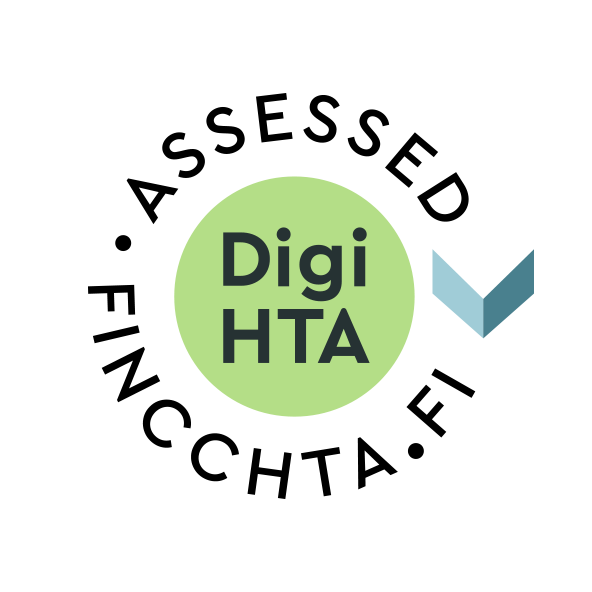The service is a website for citizens, which is openly available, and does not require a separate login. It has no separate user interface for professionals. The use of the service is not recommended for children under the age of 13, as its content is aimed at older people. [1]
Usability
The ISO 9241-210:2019 and ISO/TR 16982:2002 -standards have served as guidelines for directing design to be interactive, human-centred, and usable. According to the company’s notification, the people who participated in the testing of the product correspond to the actual end users of the product. The company collects feedback from young people and parents of families with children through the online service, at various events, and through cooperation with the Youth Council. In addition, the wellbeing services counties have gathered feedback from young people and their parents through surveys. [1]
Usability testing reports are available for usability testing. Usability testing has detected problems with images, and especially texts. The number of texts has been reduced on the basis of wishes, and the wellbeing services counties, in turn, have requested to have their own texts on the websites. The removal of the signs has occasionally caused misunderstandings, for example, the icons of the worry test have been mistaken for links. In order to improve clarity, the text has had to be restored. [1]
End users have been considered in the design and formatting of the service’s text content [1].
According to the company, developing the usability and accessibility of a product is a continuous process. Accessibility training has been arranged for the company’s personnel, and the training is a part of continuous planning. [1]
The service has a common feedback channel for the end users of the product and professionals, where you can: give a thumbs up or give written feedback. The company takes customer feedback into account in product development. [1]
Accessibility
The product has undergone an accessibility assessment, which the company has carried out itself. The accessibility status is described in the product’s accessibility statement, which is available on the websites en.jaksa.fi and normaali.fi [7]. Our goal is to make our own accessibility assessment and to update the accessibility statement annually. The service and its contents meet the technical accessibility requirements determined by European standard EN 301 549. [1]
According to the company, special user groups have been taken into consideration in the design of the usability and accessibility of the product as follows.
- Persons with low Finnish skills and persons with cognitive challenges.
- The text is plain language, and complex concepts have been explained in detail.
- Other special user groups
- The site works smoothly on different devices (computers, tablets, smartphones) and browsers (Chrome, Firefox, Safari, Edge) and supports common aids such as magnifiers and screen readers. [1]
It is possible to give feedback on the accessibility of the product by email of the electronic feedback channel. According to the company, it will respond to feedback within 14 days [1].
Usability and accessibility of the service from a professional’s perspective
Accessibility is the same as for the end-users, including specific groups [1]. The contents and design have been designed in cooperation with professionals in the field, and reviewed by another expert. Although design is based on the needs of the end-user, feedback from professionals is continuously collected, and regular development meetings are held to guide product development. A professional can give feedback electronically in the service, by email during office hours, or by telephone 24/7. [1]
A demo version is available for the client organisation free of charge during the deployment process [1].
General instructions for procurement
The procuring organisation must take into account the accessibility requirements laid down by applicable legislation in force at any given time [8, 9, 10].


